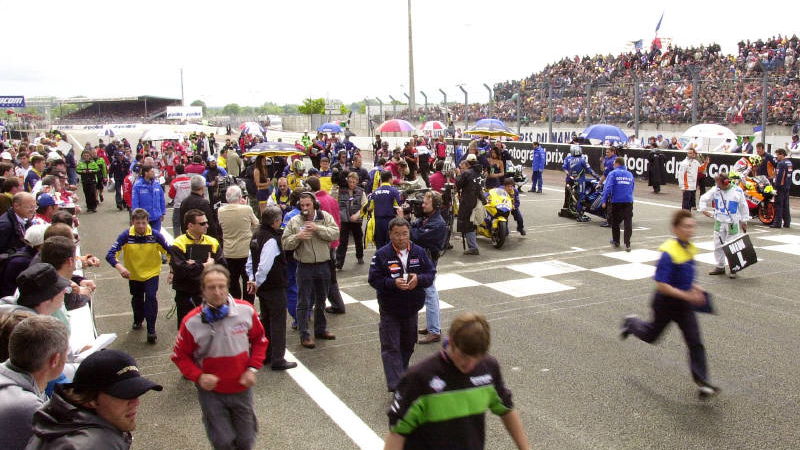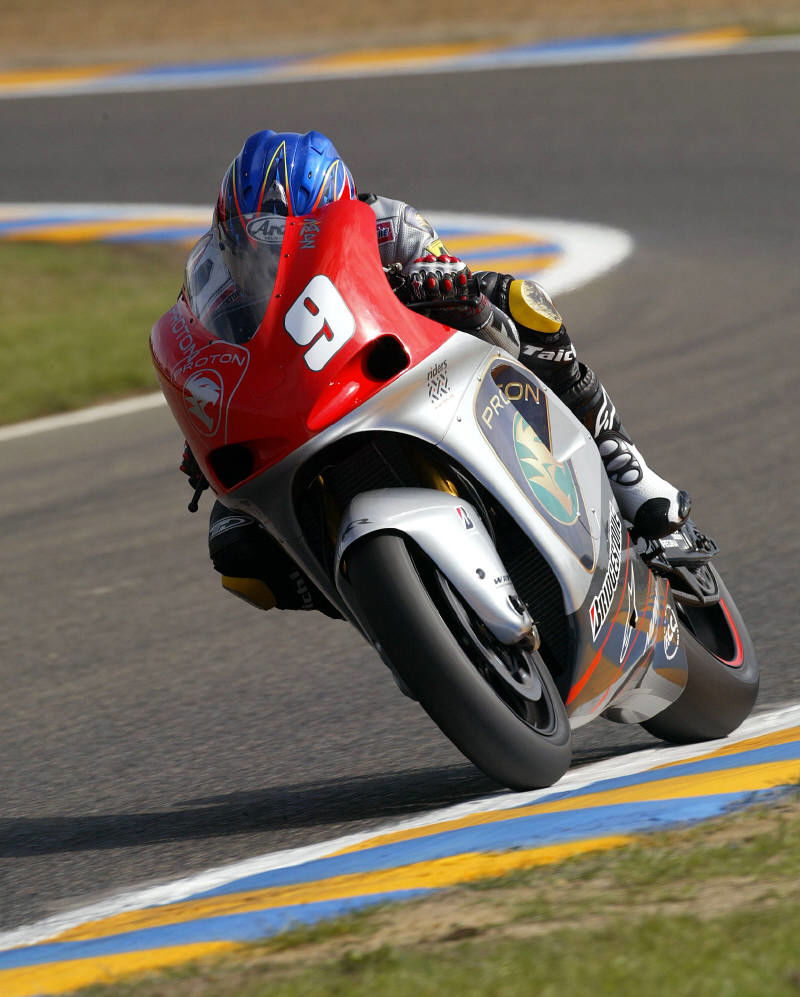It's raining regulations.
The television companies were happy, the 75,000 crowd understood what was going on and Sete Gibernau took full advantage of the situation. Valentino Rossi did not complain but must have felt more than a little cheated, while the Camel Pramac Pons pair of Max Biaggi and Tohru Ukawa, for example, would have scored more vital points under the old system...

The television companies were happy, the 75,000 crowd understood what was going on and Sete Gibernau took full advantage of the situation. Valentino Rossi did not complain but must have felt more than a little cheated, while the Camel Pramac Pons pair of Max Biaggi and Tohru Ukawa, for example, would have scored more vital points under the old system...
The new MotoGP regulations concerning the rain came into play for the first time last week at Le Mans. Generally they were pretty well received by the majority, although a little bit of fine-tuning may be needed before pleasing everybody.
The new rules certainly simplified the situation when comfortable race leader Valentino Rossi put up his hand and the red flag brought the French Grand Prix to a halt after just 15 laps. The rain was pouring down. All the riders had fitted slick tyres for the dry conditions at the start of the race. It was impossible and extremely dangerous for them to continue to risk their lives riding 220 bph plus MotoGP machines on such a treacherous surface.
Then the new rules sprung into operation. In the past the race would have been re-started and the necessary number of laps, namely 13 in the Le Mans situation, completed to make up the complete 28 lap distance of the race. The times of the two races would be added together to find the overall winner.
That meant the rider winning the second leg of the race was not the necessary winner of the grand prix because of his performance in the first leg. It was confusing for both television viewers and the spectators as they struggled to work out the winner from the result of the two legs.
The new system is certainly not complicated but is it completely fair. A totally new 13 lap race was run with the winner scoring the maximum 25 World Championship points. All the first race determined was the grid positions for the start of the second and actual World Championship race. Any rider crashing or dropping out of the first race was not allowed to compete in the second race which would have been the same situation with the old system.
If the race had been stopped with less than three laps remaining, the new race would be held over a minimum three laps which would certainly make for some fun and games. The 13 laps at Le Mans may have been ten laps longer but it provided a generous portion of fun and games, especially on the last couple of laps.
At Le Mans the riders came back to the pits. The second race would not be stopped what ever the conditions. it was a vital time for tyre choice in the drying conditions before embarking on two warm-up laps before the start of the race. Some riders including Max Biaggi and Olivier Jacque, gambled by fitting intermediate rear tyres as the start and finish straight began to dry.
Half a warm-up lap to the wet and slippery far side of the Bugatti circuit confirmed their worst fears. The track was still far too wet for the tyres and they to returned to the pits to change to full wets. That meant they were not allowed back on the grid and had to start the race from pit lane.
So far so good for the new regulations and confirmation the scrapping of the original plan to employ a safety car to bring the riders back to the pits after the first race had been stopped, was the correct decision. The car was then going to lead the riders back out of pit lane with a rolling start, formula one safety car style, to start the second race. After much confusion in the pre-season Barcelona test the safety car stayed in the garage.
The new regulations were embellished by the quality of the second race. Sete Gibernau pipped Rossi to the line in a hectic final lap that had viewers and spectators on their feet. Gibernau conceded that he was lucky to take full advantage of the conditions, while Rossi put on a brave face knowing he would have won easily if the rain had not arrived.
So the majority went home happy but what if the Championship at the end of the season is to be decided by a couple of points. Then the mood could be very different. It does seem more than a little unfair that a rider who has done everything right in what he believes is the actual race gets nothing for his efforts when the rains come down.
Already some people are suggesting that awarding half points for each leg might be a fairer outcome although that certainly would start all the confusion once again on who was the actual winner of the grand prix. Who would get the cup on the rostrum, the winner of the first or second race.
How about running the complete race distance whatever the conditions. That would introduce pit stops, which MotoGP does not need to up the entertainment level. The quality of the racing does that without any outside assistance.
No doubt the debate will continue especially if the Championship standings gets a little tighter at the top. Whatever the outcome, there was no doubt about the winners at Le Mans. The television viewers and spectators certainly got their moneys worth while the riders benefited from finding the safest solution to what has always been a tough call for the organisers.


